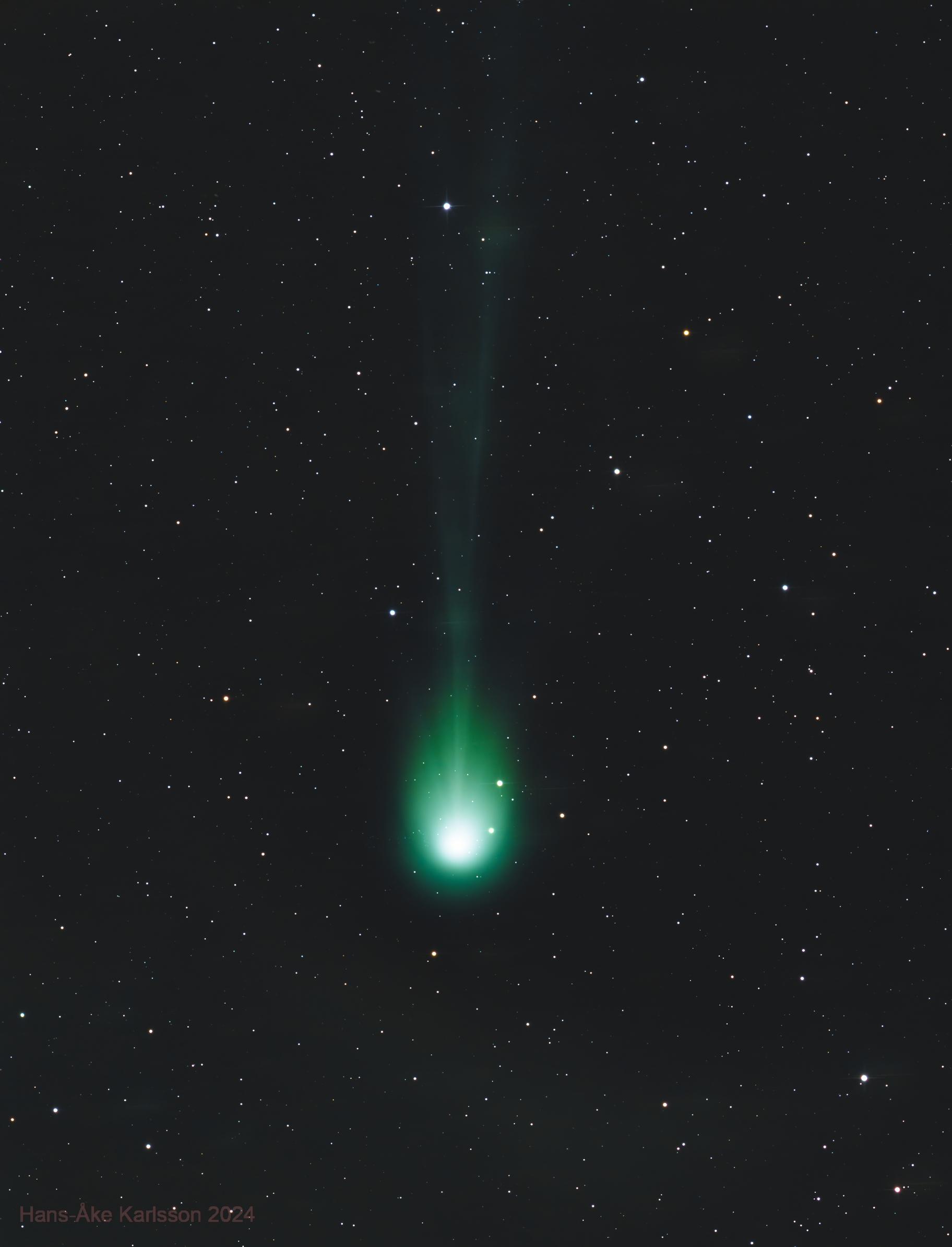
It is possible that “Devil’s Comet,” whose technical name is 12P/Pons-Brooks, will become visible from Earth in the coming weeks, especially in the Northern Hemisphere, and starting April 21 in the Southern Hemisphere and in Brazil. On that day, the comet will approach the Sun, a moment called perihelion.
It takes the celestial body 71.3 years to revolve around the sun, and although there are expectations that the celestial body will become visible with the naked eye, there are no guarantees and it is recommended to use binoculars.
Currently, the comet is passing through the Andromeda constellation, 245 million kilometers from Earth, says astrophysicist and postdoctoral researcher at the National Observatory, Felipe Montero. A comet's bright appearance is often due to explosions of gas and dust emitted from beneath its surface.
- During perihelion, when it is at a distance of 0.78 AU from the Sun or more than 116 million kilometers, the comet will reach its maximum brightness. However, Montero highlights that this provides no guarantees that 12P/Pons-Brooks can be seen with the naked eye, as its brightness is unpredictable.
To see the celestial body's perihelion, observers must look toward the western horizon, in the same direction as sunset, which is when the comet will be most visible.
In April, Satan's Comet will be under the constellation Taurus, and in May, it will be under the constellation Orion. The time at which the celestial body becomes visible varies depending on the region of Brazil due to the different sunset times. At other times of the day, it will not be possible to observe the celestial body even with binoculars and a telescope.
- In the north, specifically in Acre, the comet will remain visible until about 7:50 pm, because the state is located in the far east of the country, and in the northeast, observers will be able to see 12P/Pons Brooks between 5:45 pm and 6:20 pm. In Rio de Janeiro, the comet can be seen until 6:20 pm. Due to its proximity to the equator, the north-northeast will have the opportunity to view the celestial body at a better altitude before the rest of Brazil.
“The biggest difficulty will be to find a place with a clear western horizon, since the comet is very low in the sky, at about 15 degrees,” Montero says. From the second half of May onwards, the comet becomes louder, but also loses brightness.
June 2 is the date when the comet will be closest to Earth, but there is no risk of collision. Just because 12P/Pons-Brooks is closer to the planet doesn't mean it will be easier to see, because it will be farther from the Sun. On that date, observers from the Southern Hemisphere will still be able to see 12P/Pons-Brooks. Brooks with the help of binoculars and telescopes.
According to the US Space Agency (NASA), in the Northern Hemisphere, the object has already become visible using equipment. There, the comet is expected to be seen with the naked eye on April 8, when a total solar eclipse will also occur in the north of the planet.
The name Devil's Comet is due to its horny shape, resulting from the pressure of the sun's radiation, which formed a tail-like form of gas and dust. Looking at images of comet 2023, astronomer Elek Tamas of the Harsona Observatory in Hungary noted that it was significantly brighter due to an explosion, which also “bent” its tail.
Many astronomers are looking into possible reasons for the shape of Comet Devil's horn. One hypothesis explored is that the comet expels gas and dust unevenly. Another possibility is that part of the shiny material behind it is blocking the view.
12P/Pons-Brooks is a Halley-type comet that is periodic. “This contrasts with long-period comets, whose orbits last for thousands of years,” explains astrophysicist Felipe Montero.
>> For more news, follow SCC10 on Twitter, Instagram that it Facebook.
Would you like to receive news on your WhatsApp?
I want

“Web geek. Wannabe thinker. Reader. Freelance travel evangelist. Pop culture aficionado. Certified music scholar.”






